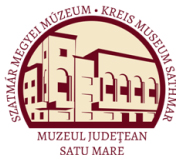Marta, Liviu: The Late Bronze Age Settlements of Petea-Csengersima (Satu Mare, 2009)
V. Conclusions. Contribution of the Petea-Csengersima Excavations to the Knowledge of the Late Bronze Age
common Lăpuş II-Gáva I antecedents are indicated on a reduced scale in the Lăpuş I phase than in the north-western areas. The presence of excised pottery in the sites from the Carei area indicate an important influence transmitted from the region of Lăpuş or that of Satu Mare towards the western region of the Upper Tisa Basin. As a result, the synthesis of some elements with different origins is reflected, frequendy difficuldy attributed to a certain microregions from the Upper Tisa area, given the fact that in dme some specific elements of certain regions had been adopted in other regions. This makes the localisation of the origin of some forms or ornaments difficult. The finds from the Satu Mare area show that the transformation process that led to the adoption of black channelled pottery takes place in the western area of the Suciu de Sus culture in a similar way to the Lăpuş Depression. The discoveries from the Carei area indicate that a similar process took place also to the west of the Suciu de Sus cultural area, in the former area of the Hajdtibagos-Cehăluţ culture. The same process seems to unfold in the north-eastern area of Hungary (Nyírség and Szatmár). The discoveries made so far between the Gáva I type finds and those of Lăpuş II seem to be very reduced, determined more likely by the inherited cultural background. The ceramic elements that used to set apart the Lăpuş II phase from the Gáva culture had been focused on the pottery of the Gáva II phase73". Almost the same elements of dissimilarity can be observed even if the pottery of the Gáva I phase is compared with that of the Gáva II phase. As a result, the pottery from the HaA phase from the regions of Sătmarului şi a Careiului is closer to the Lăpuş II pottery than to Gáva—Holihrady pottery fully formed. In conclusion it can be stated that in the area of the Upper Tisa Basin the process of adopting black-red channelled pottery has two major stages. In a primary stage, through the emergence of the Lăpuş II—Gáva I type manifestations, this pottery is quantitatively limited and knows a set of specific forms and ornaments. At this primary cultural-chronological horizon, the adoption of new elements prowess not so powerful so as to remove some traditional characteristics specific of the former cultural manifestations. These are dispersed along with the genesis of the classical stage of the Gáva culture (considered the 2nd phase), when some new pottery forms and ornaments appear scattered in a large region that comprises the Middle and Upper Tisa Basin, Transylvania, Galitia and Bucovina. In the Upper Tisa Basin the Lăpuş II-Gáva I type manifestations are linked with Cincu-Suseni/ Kurd type deposits. The Lăpuş II- Gáva I cultural horizon is dated as a result in the Ha A1 stage, it still being difficult to establish in what degree it continues to exist in the Ha A2 stage730 731. The analyses of Cl4 that have been recently made, attest the dating of Lăpuş II phase at the end of the 14th century and the beginning of the 13th century BC732. The link between the Lăpuş II—Gáva I type manifestations and the Cincu-Suseni/ Kurd type deposits is confirmed by the fact that the habit of breaking up the finds in these types of deposits is present also in the deposits in the settlements (the vessel deposits from Petea—Csengersima and Lazuri) or in funerary deposits (the tumulus necropolis at Lăpuş). Once with the beginning of the Gáva II phase, linked with more recent deposits type, the habit of depositing whole objects is encountered not only in bronze deposits but also in ritual vessel deposits in the settlements. Also in this stage large scale fortifications appear in the Someş Plain (Călineşti Oaş, Căuaş and Andrid). Even if in the case of some settlements 730 Specific of the Gáva culture and not encountered in the Lăpuş group are some pottery forms (bi-conical vessels, vessels with levels, bowls with incurving rim, bowls with lobed rims, bowls with twisted rim in the shape of a turban, wide cup with over raised handles, beakers with relatively tall neck and curved body, vessels with hollow foot, conical vessels, vessels with lobed rims) and some ornaments (wavy incisions, belts in relief, polished star shaped motifs) (Kacsó 1990a, p. 48). 731 The HaA2 phase is difficultly observable in the Carpathian region due to the weak chronological expressiveness of the Turia—-Jupalnic type deposits (Vulpe 1981, p. 429; Chicideanu 1983, p. 14-15; Kacsó 1996, p. 251) and of those of Gyermely type (Hansen 1994, p. 404). 732 Kacsó— Metzner-Nebelsick— Nebelsick 2009. 102
